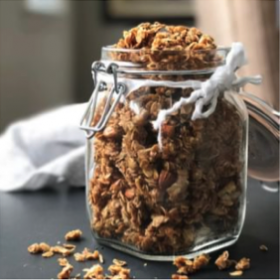Ingredients
- 500 g (3⅓ cups) strong bread flour
- 7 g (1 sachet) dried yeast
- 1 tsp caster sugar
- 300 ml filtered water
- 3 tsp olive oil, plus extra, for greasing
- 15 g fine sea salt
Summary
There’s clearly been a pizza shaped hole in this recipe collection, where a simple time-honoured dough should be. I mean what kind of community resource are we putting together here?! So if you’re keen to start making your own but the internet has overwhelmed you with options, you can get the tradition going at your place with this one – heat up that pizza stone, crack a bottle of summer’s passata, and throw something delicious on top. Friday night pizza crisis, averted.
Classic Pizza Dough
I’ve shared Mauro Gulli’s recipe from the SBS series Poh’s Kitchen. It’s a classic pizza dough recipe which includes a little olive oil and a slow rise, giving time for the flavour to mature and the instant yeast to work a little magic. As he says, you can leave this for just an hour to double in size, but maturing for longer will give a tastier crust.
“Place the flour in a mound on your work surface and make a well in the centre. Add the yeast and sugar to the centre of the well, then pour in the water and oil and combine until a dough comes together. Add the salt, then knead on a lightly floured surface for 10 minutes or until smooth and elastic. Place the dough in a lightly oiled bowl and turn to coat. (*This is the point at which I took the photo, above). Cover the bowl with plastic wrap, then stand in a warm, draught-free place to prove for 1 hour or until doubled in size. If you want to let the dough mature, refrigerate the dough overnight before proving. (*Yes, do this!). The following day, remove from the refrigerator, bring to room temperature, then prove as per the recipe”.
Thanks, Mauro. You were so succinct and clear I thought I’d just let you explain it. This amount of dough, from 500g flour, should make 3 good sized pizza bases. I love the old saying “when it comes alive in your hands, it’s ready”, though I can’t recall where I read that, but of course use a stand mixer to knead it if you like. And again, if you’re out all day it works well to knead the dough in the morning, pop it in the fridge during the day where it will work away quietly, then remove from the fridge and prove for an hour or so in the evening before baking.
What now? I am by no means a serious pizza-maker so feel free to chime in here, but once you’ve got your dough all stretchy and bubbling, this is pretty much what comes next:
Turn out the dough onto a well floured surface, slice into even segments and shape them into balls, one for each pizza. They can rest on the bench while you heat the oven (crank it to ‘hot’, that’s around 230ºC) and prepare some simple toppings. A garlicky passata sauce, or grilled broccoli for instance.
Consider freezing a few portions for next time. It’s easy enough to double the batch and have some ready to go.
With floured hands, gently encourage each ball into a disc and slowly stretch it out over your knuckles. Toss it in the air to create the thin and light pizza of your dreams, or just roll the dough on the bench. Stretch and poke at it with your fingertips, focaccia style, if that’s your thing. If it’s struggling to stay stretched into shape, let it rest for 10 minutes or so to relax the gluten, then try again. Pop it on a floured board or baking tray and top with a few of your favourite things.
Use plenty of cornmeal or semolina on the pizza stone (which should be heating in the oven), or on the baking tray. The grains will be like little ball bearings under the crust, making sure the pizza wont stick.
It should cook quickly, between 5 and 10 minutes, and be utterly delicious. Experiment with different flours, sans sugar, different spots in the oven… endless outcomes to investigate and devour 😉


